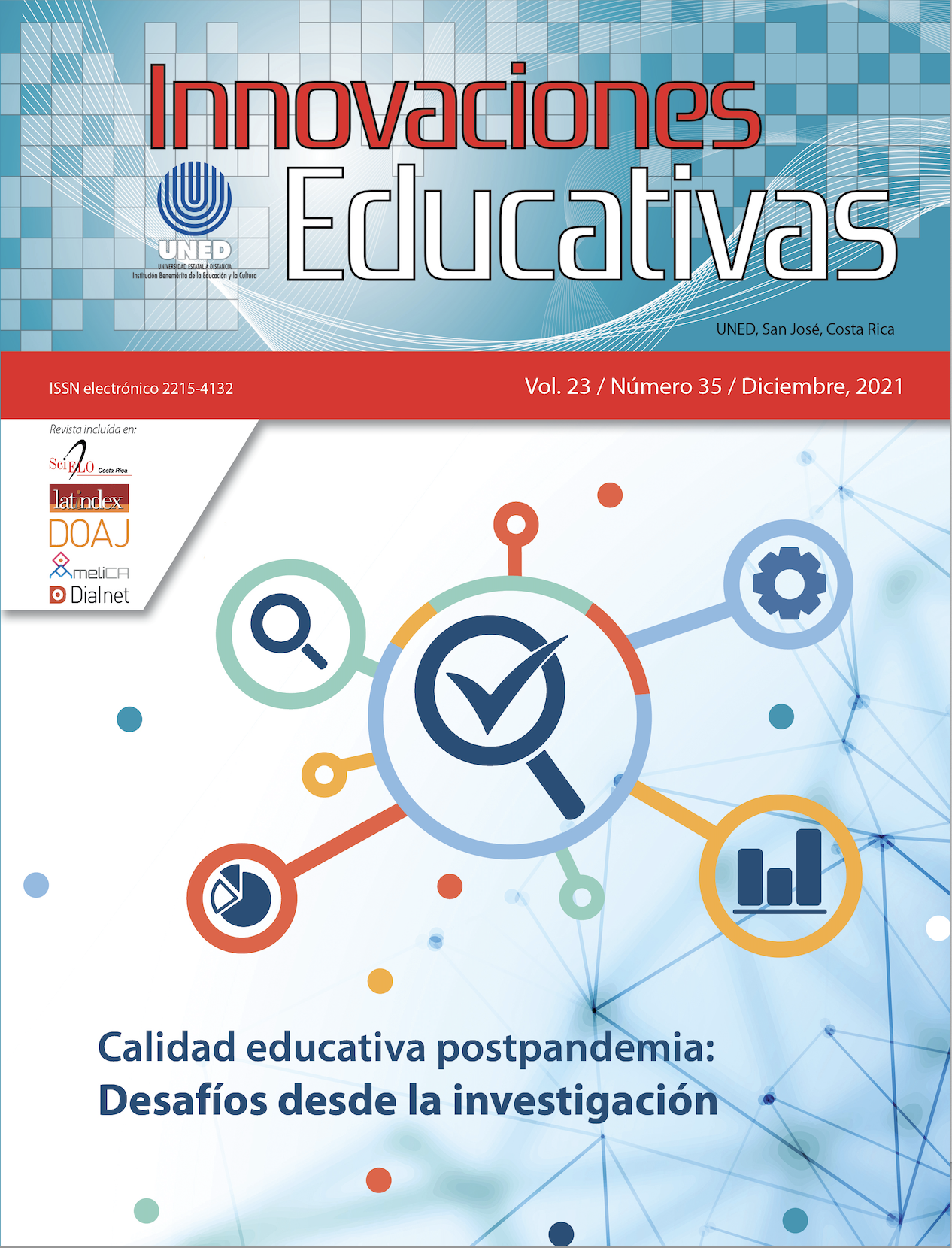Project-Based Learning of dispersion measures in search of statistical culture in a rural context
DOI:
https://doi.org/10.22458/ie.v23i35.3811Keywords:
education, statistics, dispersion measures, statistical culture, project-based learning, PBLAbstract
This paper systematizes the results of the research by means of which one identifies the way in which the project-based learning strategy can contribute to the development of the statistical culture. This with regard to the dispersion measures of the student body in a rural context and who are in the eleventh grade at the San Isidro Educational Institution, located in Colombia. This research was developed under a qualitative approach and in accordance with the guidelines of participatory action research. First, the literature that theoretically addresses, among other topics, the teaching of statistics, dispersion measures, statistical culture and project-based learning is reviewed. Then, according to the methodological design, a diagnosis is made that showed the need to implement the PBL (Project-Based Learning) pedagogical strategy to address the issue of dispersion measures, in the search for use, interpretation and critical argumentation. As for the execution of the PBL, it takes place in the midst of social isolation and, therefore, the procedure in the classroom is redesigned for work activities at home. The results of this process, allowed the conclusion that, although significant achievements were made in terms of the development of a project and data management, due to situations such as social isolation, the expected levels of statistical culture were not reached. This situation leaves a greater reflection that, when implementing this type of strategies, the interaction of the student with his/her classmates and the constant communication with the teacher is essential.
References
Alvarado, H. (2013). Didáctica de la Estadística en la educación superior. Educación Estadística en América Latina: Tendencias y Perspectivas, 319-342.
Barron, B., y Darling-Hammond, L. (2008). Teaching for Meaningful Learning: A Review of Research on Inquiry-Based and Cooperative Learning. Book Excerpt. George Lucas Educational Foundation.
Batanero, C., Godino, J., Vallecillos, A., Green, D. y Holmes, P. (1999). Errors and difficulties in understanding elementary statistical concepts. International Journal of Mathematics Education in Science and Technology, 25(4):527-547.
Batanero, C. y Diaz, C. (2011). Estadística con proyectos. Departamento de Didáctica de la Matemática.
Campos, C. (2007). A educação estatística: uma investigação acerca dos aspectos relevantes à didática da estatística em cursos de graduação. [Tesis doctoral, Universidade Estadual Paulista]. Repositorio institucional UNESP.
Del Pino, J. (2013). El uso de Geogebra como herramienta para el aprendizaje de las medidas de dispersión. Probabilidad Condicionada: Revista de didáctica de la Estadística, (2): 243-250.
Estrada, A., y Batanero, C. (2019). Prospective primary school teachers´ actitudes towards probability and its teaching. International Electronic Journal of Mathematics Education, 15(1):em0559
Gandica, E. (2017). Investigadores y cultura estadística: Una mirada crítica. Eco matemático 8(1):15-24.
Giroux, H. (2005). Border crossings. Routledge.
Hernández, R., Fernández, C., y Baptista, P. (2010). Metodología de la investigación. Mc Graw Hill.
Holmes, P. (1997). Assenssing Project Work by External Examiners. En I. Gal y J. Garfield (Eds.), The Assessment Challenge in Statistics Education (pp.153-164). IOS Press.
Kemmis, S. y Mctaggart, R. (1992). Cómo planificar la investigación: Acción. Editorial Laertes.
Kemmis, S., MacTaggart, R y Nixon, R. (2014). The Action Research Planner. Springer.
Kourkoulos, M., y Tzanakis, C. (2011). History of Staticstics and Students´ Difficulties in comprehending Variance. En V. Katz, y C. Tzanakis C (eds.), Recent developments on introducing a historical dimension in mathematics education, 174-187.
Londoño, L. (2017). Comprensión de las medidas de tendencia central, en los niños de grado tercero, cuarto y quinto, utilizando como estrategia el censo en la escuela. (Tesis de maestría). Universidad Tecnológica de Pereira.
MacCuirc, E. (2015). You Don´t Teach, Students Learn: Leassons Learned in Staticstic Literacy and Staticstic Education in Irland. Australian Journal of Statistics, 44(2):73-83.
Nieto, S. (2010). Principios, métodos y técnicas esenciales para la investigación educativa. Dykinson.
Radford, L. (2020). A Aprendizagem vista como saber e vir a ser: um olhar a partir da teoría da objetivação. REMATEC: Revista de Matemática, Ensino e Cultura, 15(36):27-42.
Sánchez, E., Borim, C. y Coutinho, C. (2011). Teachers’ Understanding of Variation. En C. Batanero, G. Burrill y C. Reading (eds.), Teaching Statistics in School Mathematics-Challenges for Teaching and Teacher Education: A Joint ICMI/IASE Study (pp. 211-221). Springer. DOI 10.1007/978-94-007-1131-0_22.
Thomas, J. (2000). A review of research on project-based learning. San Rafael, CA: Autodesk Foundation.
Vergara, J. (2015). Aprendo porque quiero. El Aprendizaje Basado en Proyectos (ABP), paso a paso. Editorial SM: Biblioteca Innovación Educativa.
Vergel, R., González, L., y Miranda, I. (2020). La relación de dependencia entre variables: Un análisis desde la teoría de la objetivación. RECME-Revista Colombiana de Matemática Educativa, 5(2):67-81.
Wallman, K. (1993). Enhancing statistical literacy: Enriching our society. Journal of the American Statistical Association, 88(421):1-8.
Watson, J. (1997). Assessing statistical thinking using the media. The assessment challenge in statistics education, 12:107-121.
Watson, M. (2006). Statistical Literacy at School, Growth and Goal. Routledge.

